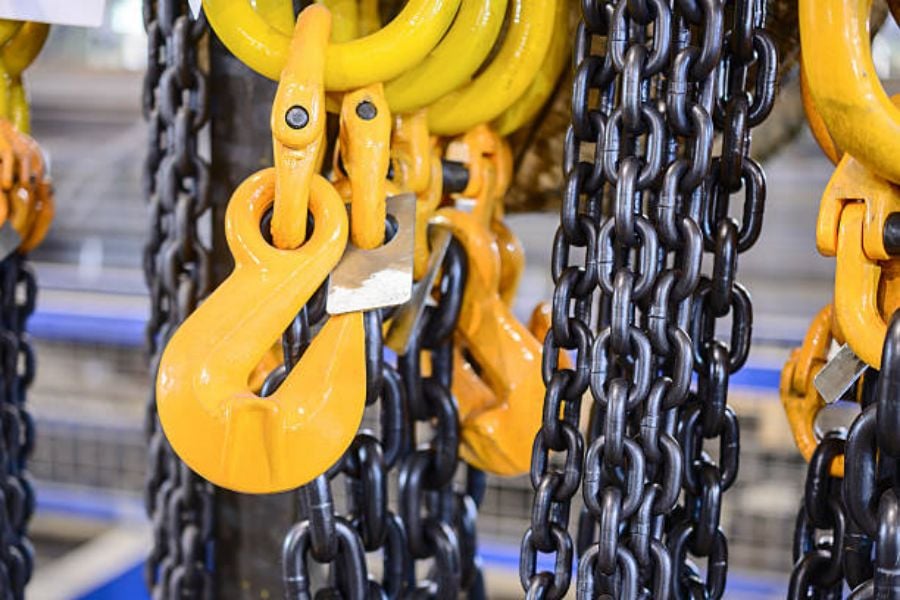Introduction
Manual wire rope hoists play a crucial role in various industries, offering a safe and efficient solution for lifting heavy loads. Whether you're working in construction, manufacturing, or any other field that requires heavy lifting, understanding the ins and outs of manual wire rope hoists is essential. In this comprehensive guide, we will explore the key features, benefits, and applications of manual wire rope hoists, enabling you to make an informed decision for your lifting needs.
1. What Is a Manual Wire Rope Hoist?
A manual wire rope hoist is a mechanical device designed to lift, lower, or move heavy objects using a system of ropes and pulleys. It consists of a drum, wire rope, lifting hooks, and a lever or hand chain mechanism. The hoist's compact and portable nature makes it ideal for applications where space is limited or mobility is required.
2. Key Components of a Manual Wire Rope Hoist
Understanding the key components of a manual wire rope hoist is crucial for its proper operation and maintenance. The main components include:
- Drum: The drum is a cylindrical spool around which the wire rope is wound or unwound.
- Wire Rope: The wire rope is the primary lifting medium, providing strength and durability.
- Lifting Hooks: These hooks are used to secure the load and attach it to the hoist.
- Lever or Hand Chain Mechanism: This mechanism allows for manual operation, either through a lever or a hand chain.
3. Advantages of Manual Wire Rope Hoists
Manual wire rope hoists offer several advantages that make them a popular choice in various industries:
- Cost-Effective: Manual wire rope hoists are generally more affordable compared to their electric counterparts, making them a budget-friendly option.
- Portability: Manual hoists are compact and lightweight, allowing for easy transportation and maneuverability in confined spaces.
- Reliability: With fewer moving parts and no reliance on electricity, manual wire rope hoists are known for their reliability and durability.
- Easy Maintenance: Manual hoists are relatively easy to maintain, requiring minimal servicing and fewer chances of breakdowns.
4. Applications of Manual Wire Rope Hoists
Manual wire rope hoists find applications in a wide range of industries and settings. Some common uses include:
- Construction: Manual hoists are frequently used in construction sites for lifting building materials, tools, and equipment.
- Manufacturing: These hoists are essential in manufacturing facilities for lifting heavy machinery and components during assembly.
- Agriculture: Manual wire rope hoists are employed in agricultural settings for tasks such as lifting hay bales or loading/unloading equipment.
- Warehousing: Hoists are indispensable in warehouses for moving heavy pallets and goods to different storage locations.
5. Factors to Consider When Choosing a Manual Wire Rope Hoist
When selecting a manual wire rope hoist, several factors should be taken into account:
- Capacity: Determine the maximum weight you need to lift to ensure the hoist meets your requirements.
- Lifting Height: Consider the vertical distance the hoist needs to cover to ensure the wire rope's length is sufficient.
- Construction Quality: Look for hoists made from high-quality materials to ensure long-lasting performance.
- Safety Features: Check for features like overload protection, safety latches, and reliable braking systems to prioritize safety.
6. Proper Usage and Safety Guidelines
Using a manual wire rope hoist safely is of utmost importance to prevent accidents and injuries. Follow these guidelines:
- Inspect Before Use: Regularly inspect the hoist for any signs of damage or wear before each use.
- Operate within Capacity: Never exceed the hoist's maximum weight capacity to avoid overloading.
- Use Appropriate Personal Protective Equipment (PPE): Wear safety gloves and goggles to protect against potential hazards.
- Follow Proper Lifting Techniques: Lift with your legs, not your back, and avoid sudden movements or jerks.
7. Maintenance and Care
Proper maintenance and care are essential for ensuring the longevity and optimal performance of your manual wire rope hoist:
- Regular Lubrication: Apply lubricant to the hoist's moving parts as recommended by the manufacturer.
- Clean and Inspect: Keep the hoist clean and inspect it regularly for any signs of damage or wear.
- Store Properly: When not in use, store the hoist in a clean and dry area, away from moisture and corrosive substances.
8. Training and Certification
Proper training and certification are crucial for anyone operating a manual wire rope hoist. Ensure that operators:
- Receive Training: Operators should undergo comprehensive training on hoist operation, safety, and maintenance.
- Obtain Certification: Certification ensures that operators have the necessary knowledge and skills to operate the hoist safely.
- Stay Updated: Regularly attend refresher courses or training sessions to stay up-to-date with the latest industry standards.
9. Popular Manual Wire Rope Hoist Brands
Several reputable brands offer high-quality manual wire rope hoists. Some popular choices include:
- Yale: Known for their reliability and durability, Yale manual hoists are widely used in various industries.
- Harrington: Harrington hoists are renowned for their precision engineering and excellent lifting capabilities.
- CM: CM manual hoists are trusted for their safety features, ease of use, and long-lasting performance.
10. Conclusion
Manual wire rope hoists are versatile, cost-effective, and reliable tools for lifting heavy loads. By understanding their components, applications, and maintenance requirements, you can choose the right hoist for your needs and ensure safe and efficient lifting operations. Remember to prioritize safety, follow usage guidelines, and provide proper training to operators to maximize the benefits of manual wire rope hoists in your industry.

